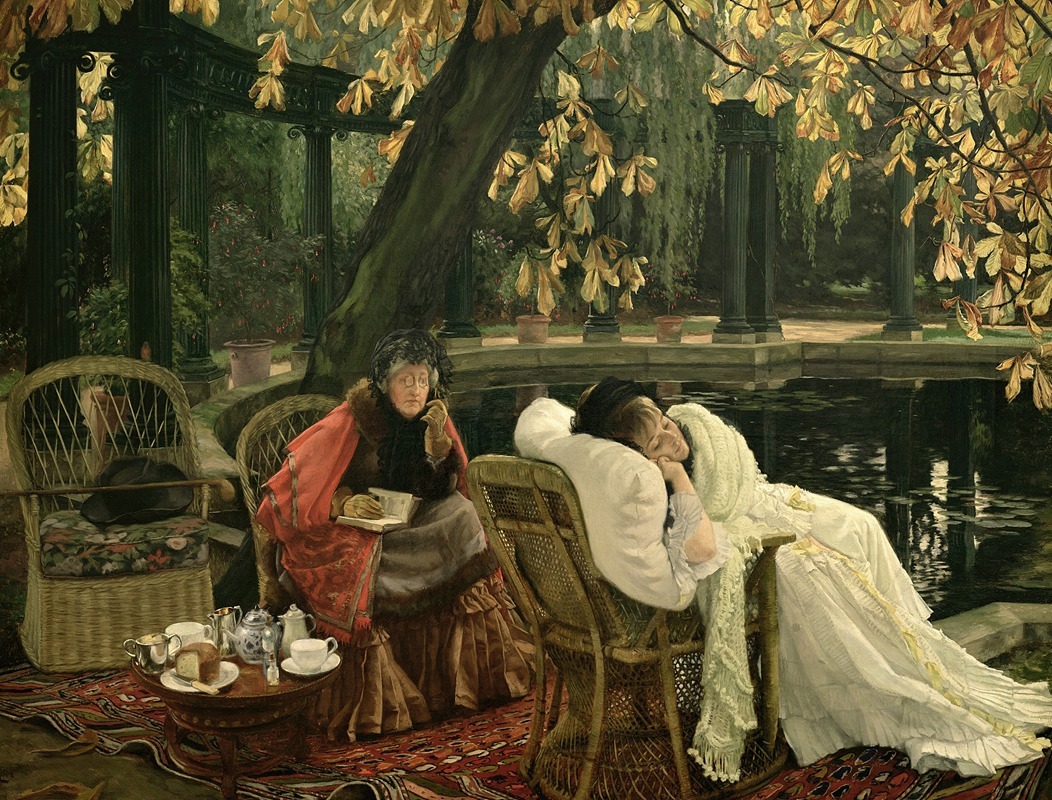
A Convalescent
A hand-painted replica of James Tissot’s masterpiece A Convalescent, meticulously crafted by professional artists to capture the true essence of the original. Each piece is created with museum-quality canvas and rare mineral pigments, carefully painted by experienced artists with delicate brushstrokes and rich, layered colors to perfectly recreate the texture of the original artwork. Unlike machine-printed reproductions, this hand-painted version brings the painting to life, infused with the artist’s emotions and skill in every stroke. Whether for personal collection or home decoration, it instantly elevates the artistic atmosphere of any space.
"A Convalescent" is a painting by the French artist James Tissot, created in 1876. Tissot, known for his detailed and often narrative-driven works, was a prominent figure in the art world during the late 19th century. He was particularly recognized for his depictions of contemporary life, capturing the nuances of fashion, society, and personal moments with a keen eye for detail.
The painting "A Convalescent" is a fine example of Tissot's ability to convey emotion and narrative through his art. It portrays a young woman in a moment of recovery, presumably from an illness, as suggested by the title. She is seated in a well-furnished interior, which reflects Tissot's interest in the domestic settings of the upper-middle class. The room is richly decorated, indicative of the Victorian era's taste, with attention to textures and patterns that Tissot meticulously rendered.
The composition of the painting draws the viewer's attention to the central figure, the convalescent woman, who is depicted with a serene expression. Her attire is elegant, reflecting the fashion of the time, and she is surrounded by objects that suggest comfort and care, such as a plush chair and possibly a blanket or shawl. The light in the painting is soft, enhancing the tranquil and intimate atmosphere of the scene.
Tissot's work often included elements that hinted at a larger story or context, and "A Convalescent" is no exception. The viewer is invited to ponder the circumstances of the woman's illness and recovery, as well as her place within the social milieu of the time. This narrative quality is a hallmark of Tissot's paintings, which frequently explore themes of social status, personal relationships, and the passage of time.
James Tissot's career was marked by his move from France to England in 1871, following the Franco-Prussian War. In England, he gained considerable success and was associated with the Aesthetic Movement, which emphasized beauty and visual pleasure in art. Tissot's works from this period, including "A Convalescent," reflect his fascination with the elegance and complexity of modern life.
The painting is part of Tissot's broader oeuvre that captures the essence of the Victorian era with precision and empathy. His ability to depict the subtleties of human emotion and the intricacies of social settings has made his work enduringly popular. "A Convalescent" remains a testament to Tissot's skill as a painter and his insightful observation of the world around him.
Today, James Tissot's paintings, including "A Convalescent," are held in high regard and can be found in various public and private collections. They continue to be studied and appreciated for their artistic merit and their reflection of the cultural and social dynamics of the 19th century.










![The Commader in Chief in India [General Sir Frederick Paul Haines], Military and Navy, from Vanity Fair, March 25, 1876](/imgs/214448/s/james-tissot-the-commader-in-chief-in-india-general-sir-frederick-paul-haines-military-and-navy-from-vanity-fair-march-25-1876-18a8ea9e.jpg)






